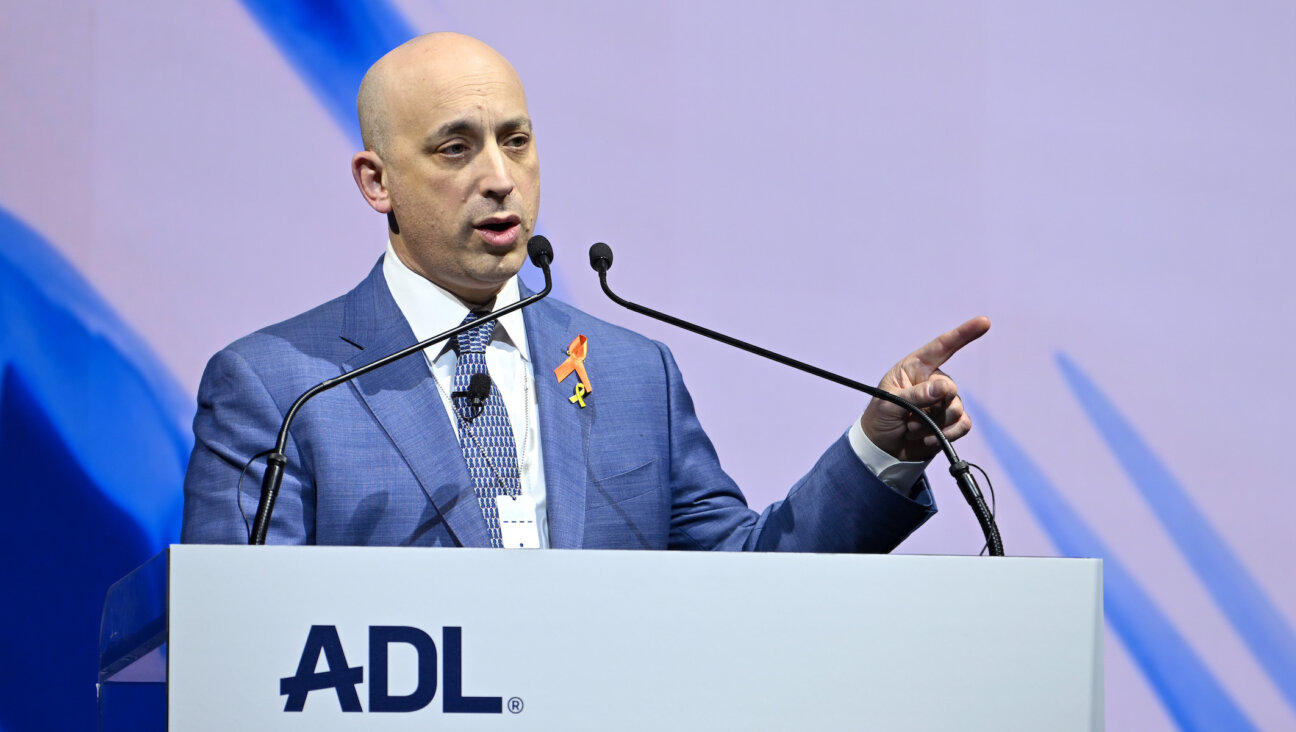Murder Trial Rivets Hong Kong’s Expat Community
For years, Nancy Kissel, a 41-year-old socialite and expatriate American, had been living the high life as a leading light in Hong Kong’s small but thriving Jewish community.
Then she killed her investment banker husband, Robert Kissel.
She bludgeoned him to death in their fashionable apartment in the ritzy Tai Tam neighborhood with a heavy metal statue.
About that, there is no dispute.
In fact, last week, Kissel shocked a Hong Kong courtroom when she admitted as much.
But what does remain an open question as Kissel’s trial enters its eighth week is whether the slaying was, as prosecutors allege, a brutal and calculated murder, plotted in advance by an unfaithful woman who knocked out her husband with a drug-laced strawberry milkshake before killing him. Or was it, as Kissel told the court during her testimony last week, a desperate act by a woman who was brutalized by a domineering and abusive husband, an ambitious man who she claimed abused her and forcibly sodomized her as a demonstration of his power over her?
The case, which has riveted the attention of Hong Kong’s affluent expatriate community, began in early November 2003. That’s when Robert Kissel’s battered body was found, wrapped in a carpet and stuffed in a storage room not far from the couple’s apartment. He had been hit at least five times in the head with a blunt object. He left an estate estimated at $18 million, all of it to his wife.
Prosecutors quickly concluded that the slaying was the final act in a stormy marriage. They charged that four days before Robert Kissel’s body was discovered, his wife, reportedly distraught over their failing marriage and her husband’s decision to seek a divorce, laced a strawberry milkshake with a cocktail of six powerful drugs — including the potent “date rape” drug, Rohypnol — and then used her 6-year-old daughter, the youngest of the couple’s three children, to serve the drink to her husband. A neighbor, who also sampled the pink concoction, told the court that he too had become woozy after drinking it. Once Robert Kissel was incapacitated, prosecutors allege, his wife beat him to death.
To bolster their case, prosecutors produced testimony from several witnesses, including a close friend of the couple. In statements provided to the court and confirmed to the Forward, friend and confidante Bryna O’Shea wrote that as early as April 2003, it was becoming evident that what had appeared at first to be a perfect marriage was on the verge of collapse.
O’Shea declined to elaborate on her testimony. However, she confirmed published reports that months before he was found dead, Robert Kissel had indicated to O’Shea that he knew that his wife was having an affair — a romance with a Vermont man she had met after leaving Hong Kong for a time to escape the Severe Acute Respiratory Syndrome (SARS) epidemic. Before his death, Robert Kissel had become suspicious enough about his wife’s behavior to wonder aloud to O’Shea whether Nancy Kissel might be plotting to kill him.
By August 2003, Robert Kissel’s suspicions had become full-blown fears, prosecutors allege. According to testimony in the case, months earlier Robert Kissel hired a Long Island investigator, Frank Shea of Alpha Group Investigations, who confirmed that his wife was having an affair with a well-built and much younger television repairman whom she had met in Vermont. Shea declined to be interviewed for this story.
But according to published reports, he told the court that he maintained contact with Robert Kissel after completing his assignment, and that as early as August — three months before his death — Robert Kissel had confided to Shea that he feared his wife was trying to poison him.
But on the stand last week, Nancy Kissel, who has pleaded not guilty to murder charges, told a rapt courtroom a very different story. According to her testimony, her marriage had been deteriorating, but she claimed that it was the result of a dramatic change in her husband’s personality — a change, she said, borne out of ambition and fueled by what she said was a growing dependency on cocaine and good scotch. As he became more successful in business, Kissel maintained, he became more physically and emotionally abusive.
Kissel testified that the abuse came to a head November 2, 2003, when Robert Kissel told her that he had filed for divorce. When she questioned her husband, Kissel testified, he became enraged and threatened her with a baseball bat. The two struggled furiously, and it was then, she told the court, that she struck the man on the head with the metal statue.
Kissel was not injured in the struggle. And in the days after the death, she allegedly told friends only that she and her husband had a fight and that she had stormed out of the apartment.
She later reported him missing to police.
Though an autopsy found traces of all six drugs in Robert Kissel’s stomach, Kissel insists that she did not drug her husband on the day of his death. She did admit, however, that on two previous occasions she had laced her husband’s scotch with a sedative, but also insisted that she did it only after he became abusive, in attempts to calm him down.
Kissel also insisted to the court that she has no memory of the events that followed the slaying, though a surveillance camera at her apartment building captured an image of her carrying out of the building a large object wrapped in a carpet after her husband’s death.
Prosecutors contend that Kissel is feigning memory loss.
The trial is expected to continue until the end of the month. If convicted, Kissel faces life in prison.
The Forward is free to read, but it isn’t free to produce

I hope you appreciated this article. Before you go, I’d like to ask you to please support the Forward.
Now more than ever, American Jews need independent news they can trust, with reporting driven by truth, not ideology. We serve you, not any ideological agenda.
At a time when other newsrooms are closing or cutting back, the Forward has removed its paywall and invested additional resources to report on the ground from Israel and around the U.S. on the impact of the war, rising antisemitism and polarized discourse.
This is a great time to support independent Jewish journalism you rely on. Make a Passover gift today!
— Rachel Fishman Feddersen, Publisher and CEO
Most Popular
- 1

News Student protesters being deported are not ‘martyrs and heroes,’ says former antisemitism envoy
- 2

Opinion My Jewish moms group ousted me because I work for J Street. Is this what communal life has come to?
- 3

News Who is Alan Garber, the Jewish Harvard president who stood up to Trump over antisemitism?
- 4

Fast Forward Suspected arsonist intended to beat Gov. Josh Shapiro with a sledgehammer, investigators say
In Case You Missed It
-

Culture ‘Shtisel’ star Sasson Gabay is happy to be back playing a complex haredi Orthodox Jew in ‘Kugel’
-

Fast Forward Noa Argamani, ADL’s Jonathan Greenblatt among over a dozen Jews on 2025 TIME 100 list
-

Fast Forward US claims Mohsen Mahdawi’s activism could ‘potentially undermine’ prospect of peace in Gaza
-

Opinion What Jewish university presidents say: Trump is exploiting campus antisemitism, not fighting it
-
Shop the Forward Store
100% of profits support our journalism
Republish This Story
Please read before republishing
We’re happy to make this story available to republish for free, unless it originated with JTA, Haaretz or another publication (as indicated on the article) and as long as you follow our guidelines.
You must comply with the following:
- Credit the Forward
- Retain our pixel
- Preserve our canonical link in Google search
- Add a noindex tag in Google search
See our full guidelines for more information, and this guide for detail about canonical URLs.
To republish, copy the HTML by clicking on the yellow button to the right; it includes our tracking pixel, all paragraph styles and hyperlinks, the author byline and credit to the Forward. It does not include images; to avoid copyright violations, you must add them manually, following our guidelines. Please email us at [email protected], subject line “republish,” with any questions or to let us know what stories you’re picking up.











